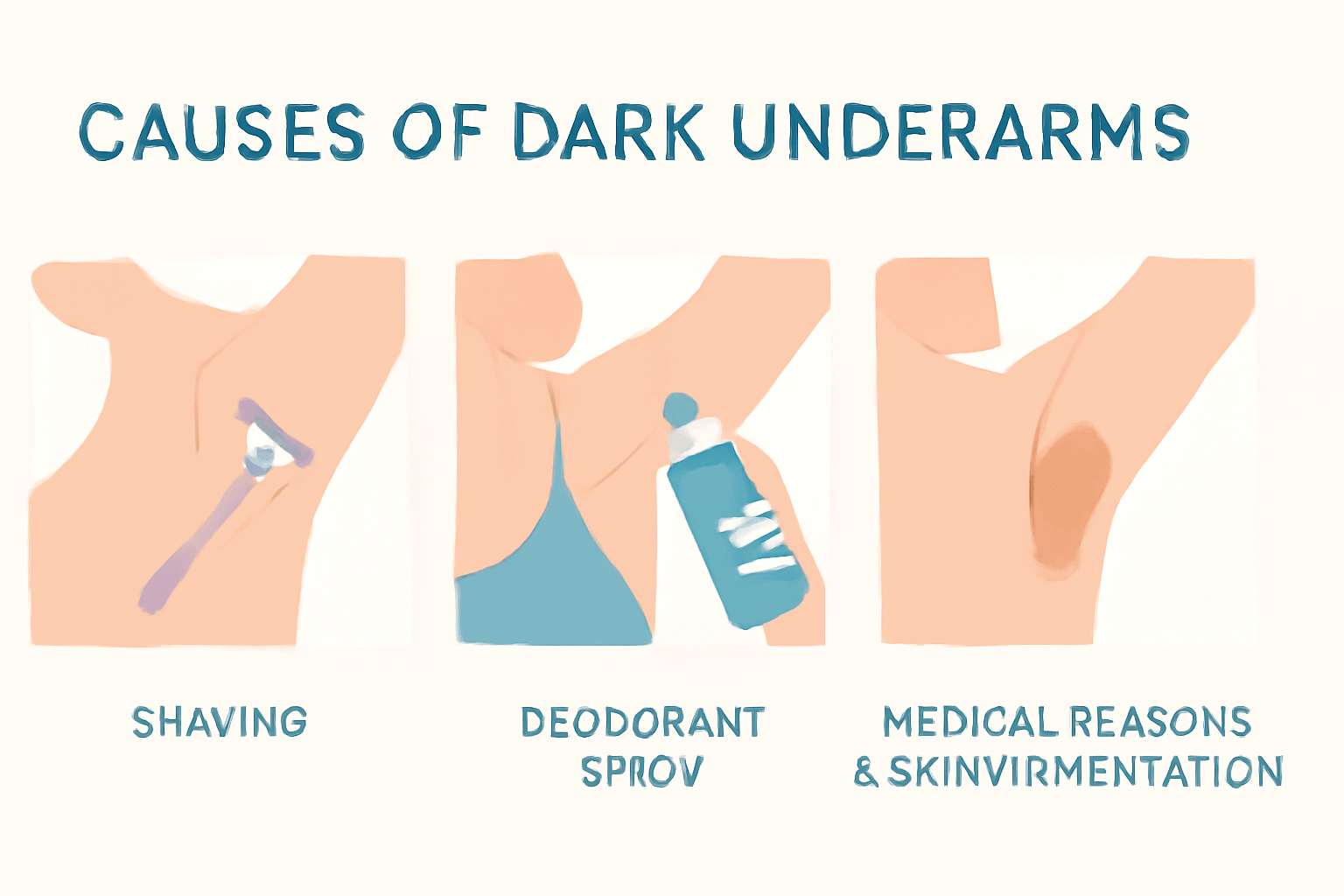Why Are My Underarms Darker Than the Rest of My Skin? Is It Because of Shaving, My Deodorant, or Something Medical?

Darker underarms are a widespread concern for people of all skin types, especially in regions like India, where friction, humidity, and grooming routines are common. If you’ve ever wondered, “Why are my underarms noticeably darker than my arms, chest, or neck?” you’re not alone—and the answer usually involves multiple factors working together.
Common Reasons for Underarm Darkening
1. Shaving and Hair Removal
How it happens: Shaving doesn’t remove hair roots; leftover stubble can create a shadow, making underarms “look” darker.
Hidden culprit: Shaving also causes micro-injuries to the skin. Repeated trauma can trigger inflammation, which increases melanin (pigment) production—leading to post-inflammatory hyperpigmentation.
Waxing and epilation: These can also cause irritation, especially if the skin is pulled aggressively or reacts to wax chemicals.

Wild Oak Underarm Brightening Spray + Deodorant
2. Friction and Tight Clothing
Repeated rubbing from tight tops, bras, or activewear can irritate the underarm skin, causing it to respond by thickening and darkening over time.
Individuals with higher body weight or those who sweat often may notice more friction-related pigmentation.
3. Deodorant and Antiperspirant Use
Harsh Ingredients: Common deodorants contain alcohol, aluminum salts, and strong fragrances—all of which can irritate underarms and trigger pigment production, especially after shaving or on sensitive skin.
Contact dermatitis: Allergies or reactions to certain deodorants or soaps can lead to itching, burning, rashes, and, eventually, dark patches.
4. Build-up of Dead Skin and Poor Hygiene
Accumulation of sweat, bacteria, and dead skin cells increases both odor and dark coloration. Regular gentle exfoliation is needed to keep underarms bright.
5. Medical Causes
Acanthosis nigricans: Characterized by dark, velvety patches, this may signal underlying health issues like insulin resistance, obesity, PCOS, thyroid disease, or hormonal imbalances.
Diabetes: People with diabetes or pre-diabetes may notice more pronounced underarm darkness.
Medications: Hormonal contraceptives, steroids, or certain drugs can also cause pigment changes.
If darkness is sudden, severe, or accompanied by other symptoms (itch, pain, rash), see a dermatologist for medical evaluation.
6. Hormonal Changes
Pregnancy, puberty, and other hormonal shifts can prompt pigment changes across the body—including the underarms.

Before & After of Wild Oak Underarm Brightening Spray + Deodorant
How to Tell What’s Causing YOUR Dark Underarms
-If you notice darkness after shaving/waxing: Irritation and inflammation are likely at play.
-If your skin reacts to deodorants: Try switching to alcohol-, aluminum-, and fragrance-free options.
-If there’s a family history or associated conditions (obesity, PCOS): Medical causes may be contributing.
-If you wear tight clothing/sweat frequently: Friction and bacterial build-up could be responsible.
Read Are Spray Deodorants Causing Your Dark Underarms? What to Avoid
What Can You Do About It?
Gentle skin care: Use fragrance-free, alcohol-free brightening sprays (like Wild Oak), and exfoliate 1–2 x a week with mild acids (mandelic, glycolic, lactic acid).
Switch deodorants: Opt for formulas made for sensitive skin, avoiding harsh chemicals.
Change grooming habits: Wait 24–48 hours after shaving or waxing before applying any product.
Review health: If you suspect hormonal or metabolic issues, consult with your physician.
Moisturize and protect: Barrier repair creams with niacinamide or aloe can help; always keep underarms dry and clean.
Bottom Line
Underarm darkness is usually a combination of grooming routines, product choices, clothing friction, and occasionally health concerns. Start with gentle care, clean formulas, and, if needed, a doctor’s advice—so you can confidently show off bright and comfortable underarms every day.





